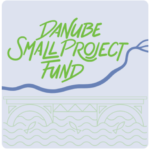Process; ongoing
EUSDR Priority Area(s): PA 4 Water Quality
Climate change is a global challenge and it is a crosscutting issue. PA 4 supports a number of related actions in which water availability and water quality are key issues to climate change adaptation as stated in PA 4 Action 6 of the EUSDR Action Plan. Moreover, climate change issues are also part of PA 5 activities.
Among others, PA 4 organised a conference on adaptation to climate change in Budapest, HU, (2023) to showcase good practices and innovative, new approaches. The Priority Area supports a number of international projects on small water and nutrient retention measures (OPTAIN), local water retention measures (LIFE LOGOS 4 WATERS). PA 4 is assisting in the Danube Water Balance project, creating a water balance mode for the whole Danube River Basin. It actively supports the innovative water management initiatives of the DALIA project, DanubeSediment_Q2 in improving the management of sediment quantity and quality, RESTORIVER in the restoration of river banks and riparian areas and facilities other projects related to climate change.
Objectives: The process focused on climate change aims at sharing experience and best practices in climate change adaptation emphasising (green) water retention measures, which contribute to better water quality and water availability in the Danube Region. Many initiatives labelled as “climate change adaptation” have emerged in the Danube Region countries. This indicates growing awareness over the last decade on how important the adaptation component has become in numerous sectors of the economy. There are already good stories and first lessons learnt from introduction of novel approaches in water and landscape management. However, there are still a lot of challenges which need to be addressed jointly with support at political level from top-down viewpoint, and horizontally by various stakeholders and EUSDR Priority Areas.
Need and (expected) impact: Continuing climate change, especially climate extremes (floods and droughts), pose the challenges on water quality and water availability for all users. This includes increased uncertainty and variability of extreme weather events. Therefore, adaptation strategies in the water sector need to address several emerging trends driven by climate change as interventions on the supply and demand side. While supply-side adaptation options involve measures for water retention in the country, the demand side includes measures to ensure necessary water for key consumers and critical infrastructure, including ecosystems, always having the supply side in focus. The addressed water retention measures (e.g. polders, lakes, ditches, dams) flatten the flood waves, store the water for dry periods, enable the recharging of groundwater supplies, and are favourable for ecosystems. Moreover, the potential conflicts among users in drought periods must be managed within emergency plans. Besides water accessibility from a quantitative viewpoint, adequate water quality needs to be maintained.
Macro-regional dimension: Since climate change is a global problem, it concerns the whole Danube Region. Therefore, the adaptation measures will be functional and effective only in case they are applied transnationally, at macro-regional level. Many of the Danube countries have already adopted the Climate Change Adaptation Strategies and applied first measures to avoid adverse impacts of droughts/floods. However, this is not enough and further measures should be supported and properly implemented.
Stakeholders involved: Policy- and decision-makers at government bodies of Danube Region countries, international water-related bodies, think-tanks, NGOs, the academic and research sector, land users, water service providers, and practitioners in urban planning. There is regular cooperation with the mentioned organisations, ensured by trilateral and SG meetings as well as joint events.
Budget and Funding: The process has already been partly financed by the implementation of the PA 4 relevant projects related to climate change. The transnational projects were financed by Interreg Central Europe, Interreg Danube Region Programme, Horizon 2020, Horizon Europe, and LIFE programmes.
The new financing is needed to be allocated for climate change adaptation-related projects and processes (e.g. negotiations, meetings, conferences, workshops and public awareness-raising campaigns).
Further information:
- https://www.optain.eu/
- https://dalia-danube.eu/
- https://interreg-danube.eu/projects/danube-water-balance
- https://interreg-danube.eu/projects/danubesediment-q2%C2%A
- https://lifelogos4waters.bm.hu/en/home/
- https://waterquality.danube-region.eu/wp-content/uploads/sites/13/sites/13/2019/09/Action_Plan_EUSDR-1.pdf
Contact: Mr Márton Pesel, Priority Area Coordinator, PA 4, Ministry of Foreign Affairs and Trade Hungary,
Other: Adaptation to climate change is very difficult since there is often not enough relevant data which may lead to maladaptation: decisions may fail to meet their objectives, and they may even increase vulnerability of other systems. This is the case for the water management sector as well, e.g., construction of an irrigation system may result in water shortage as a consequence of climate change. The implementation of climate change adaptation measures should be considered in a complex way. When designing adaptation projects, there is a need to assess the negative externalities associated with infrastructure projects on both ecosystem and human sides.

>> Download Certificate 2022 <<
>> Download Certificate 2023 <<
>> Download Certificate 2024 <<


